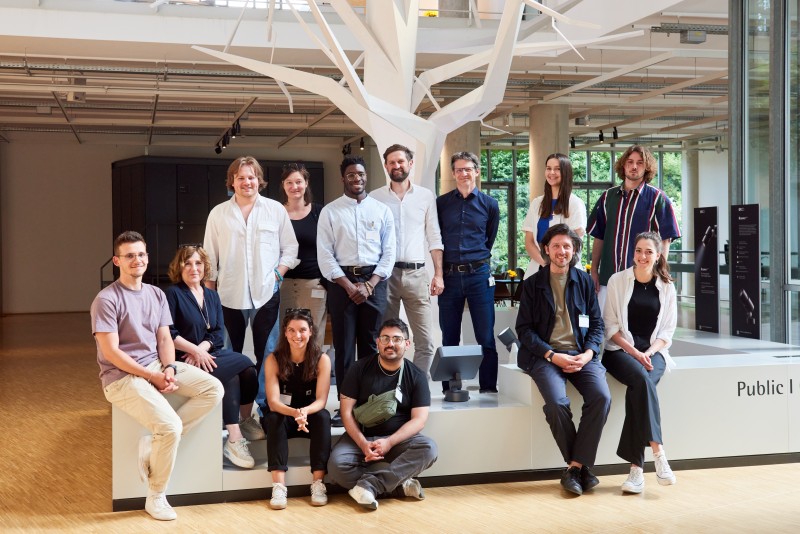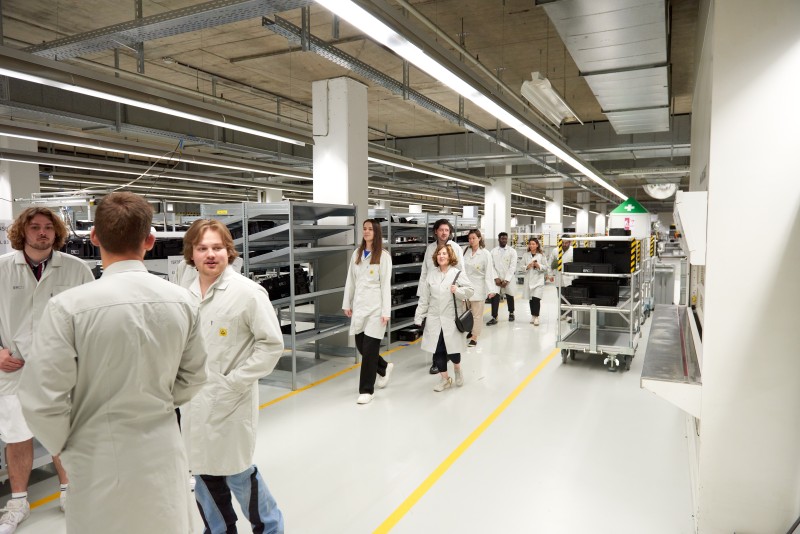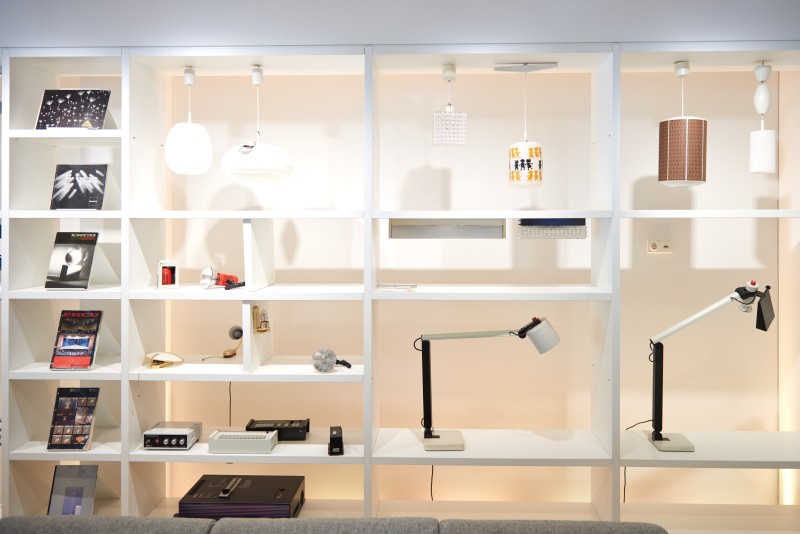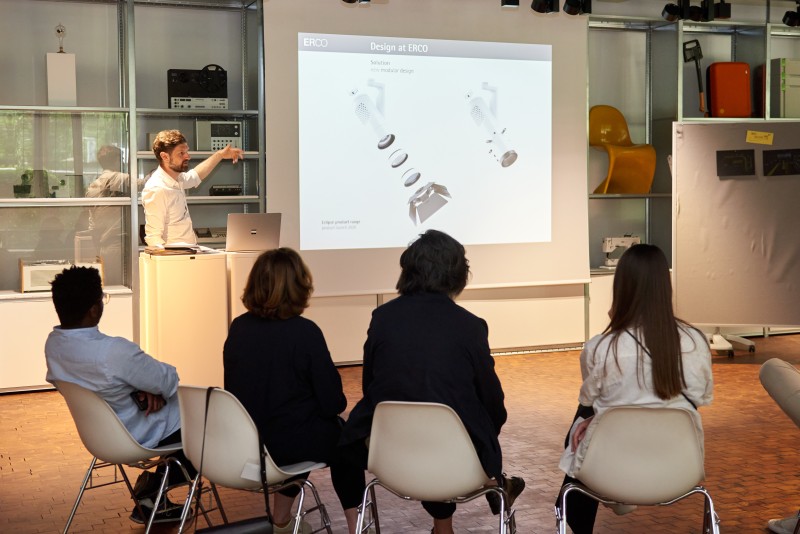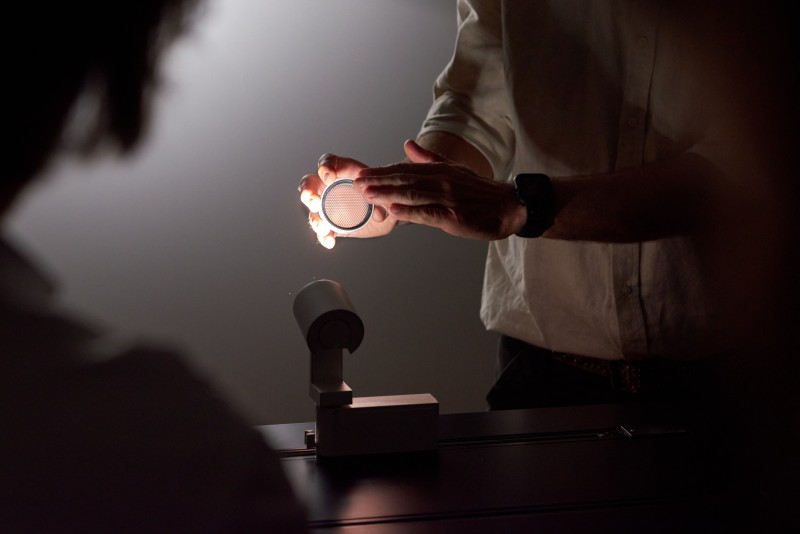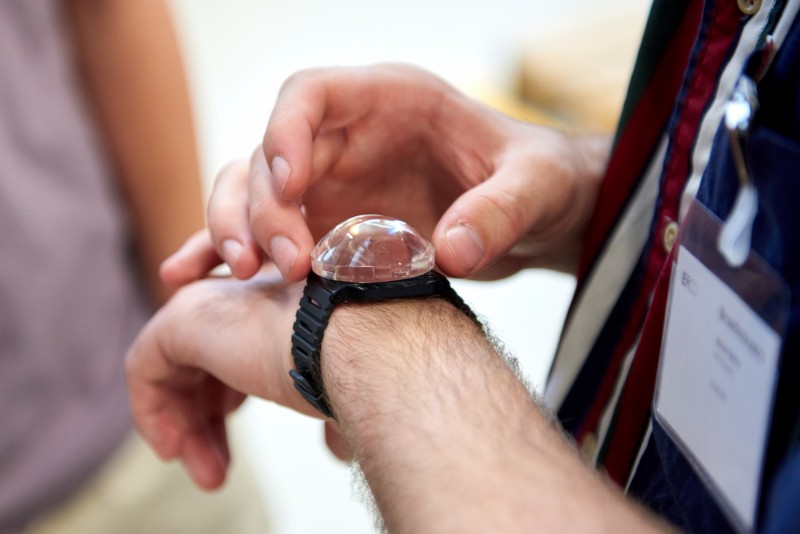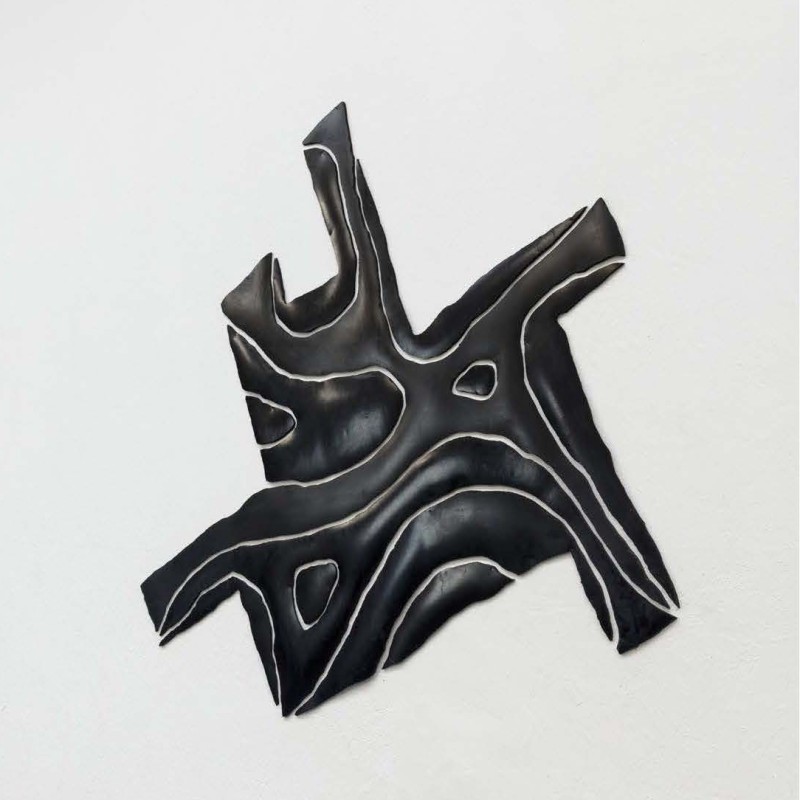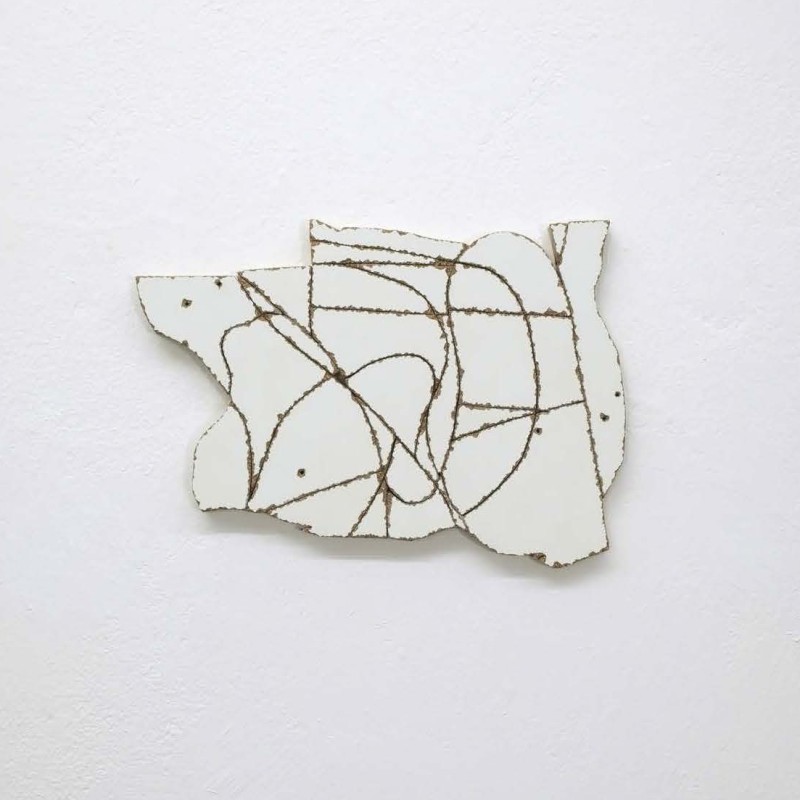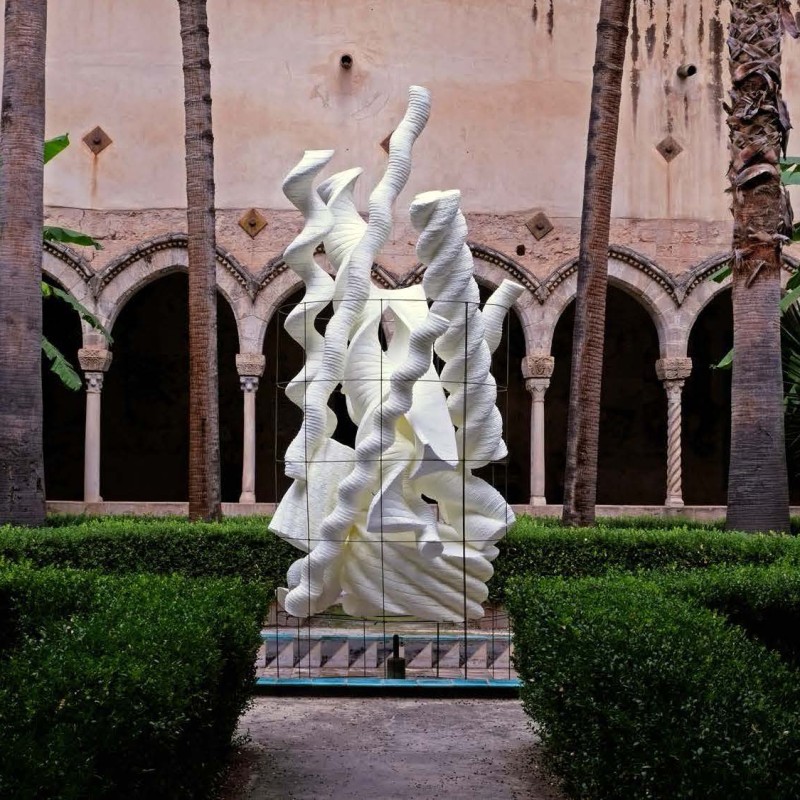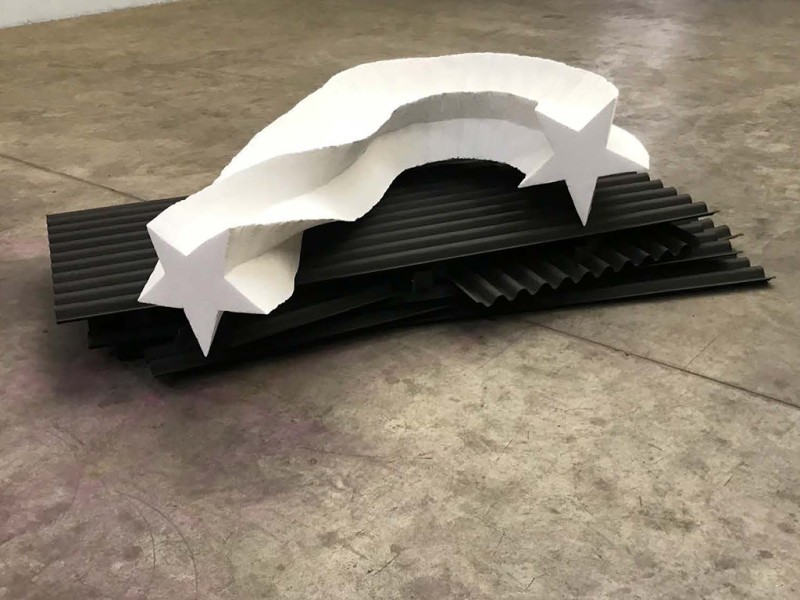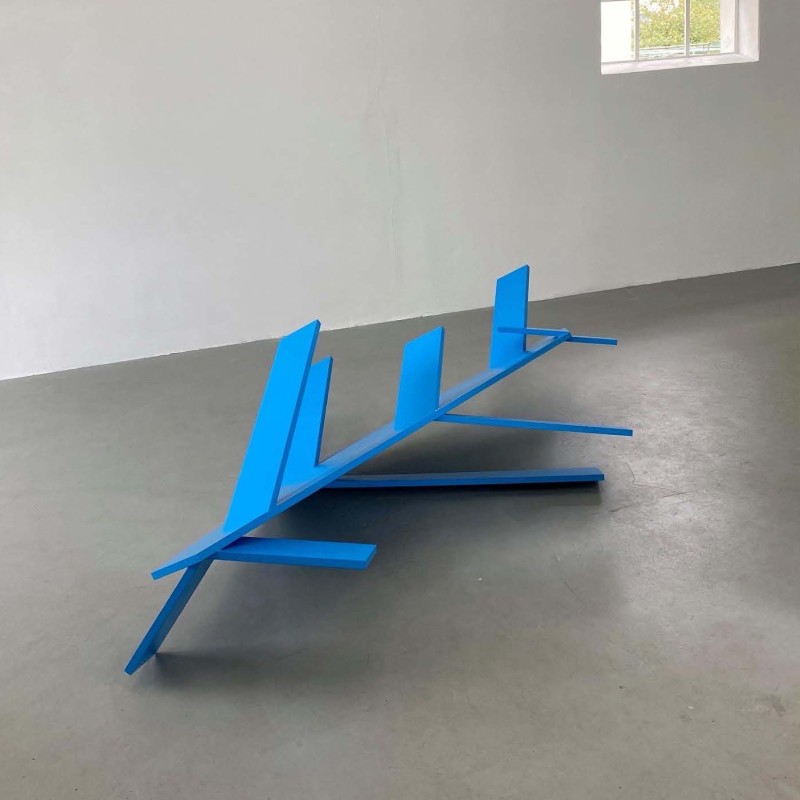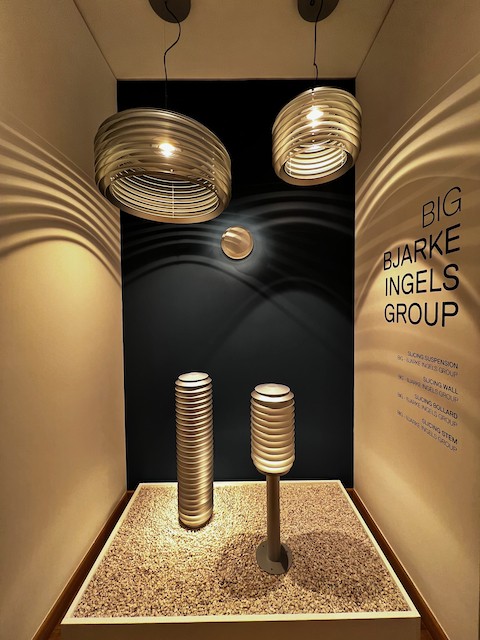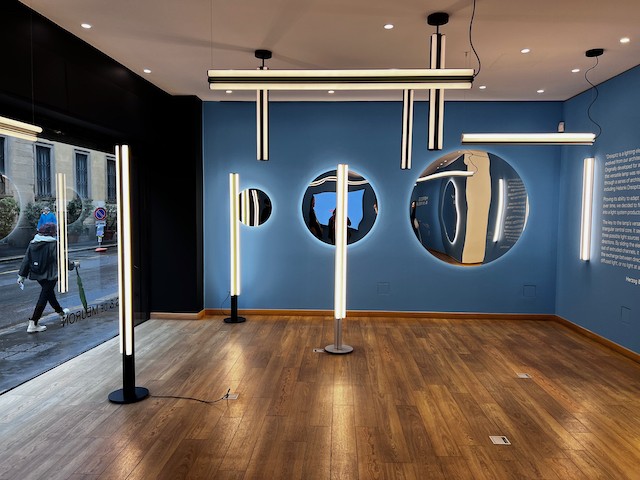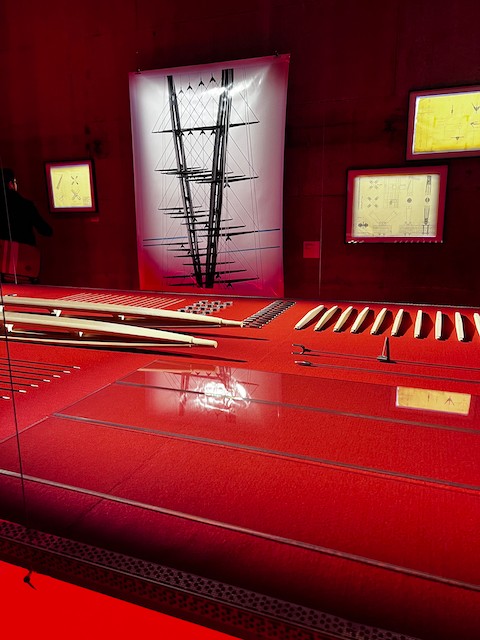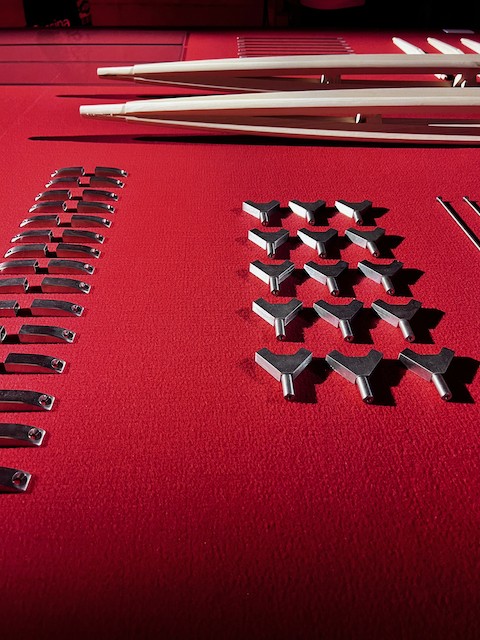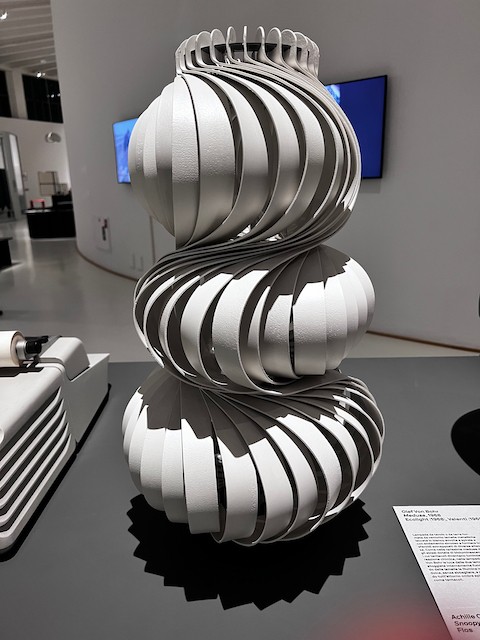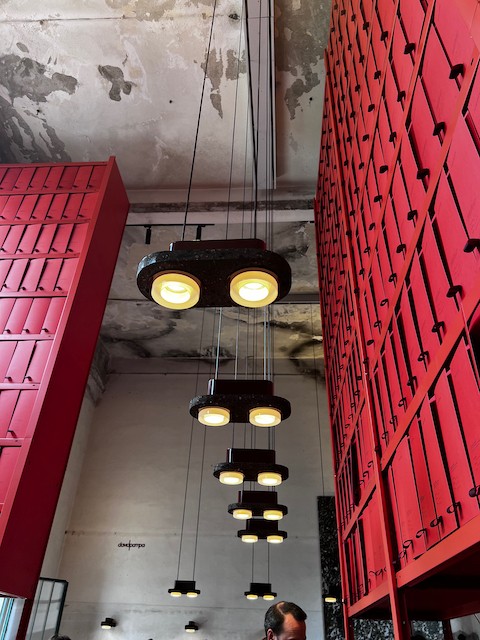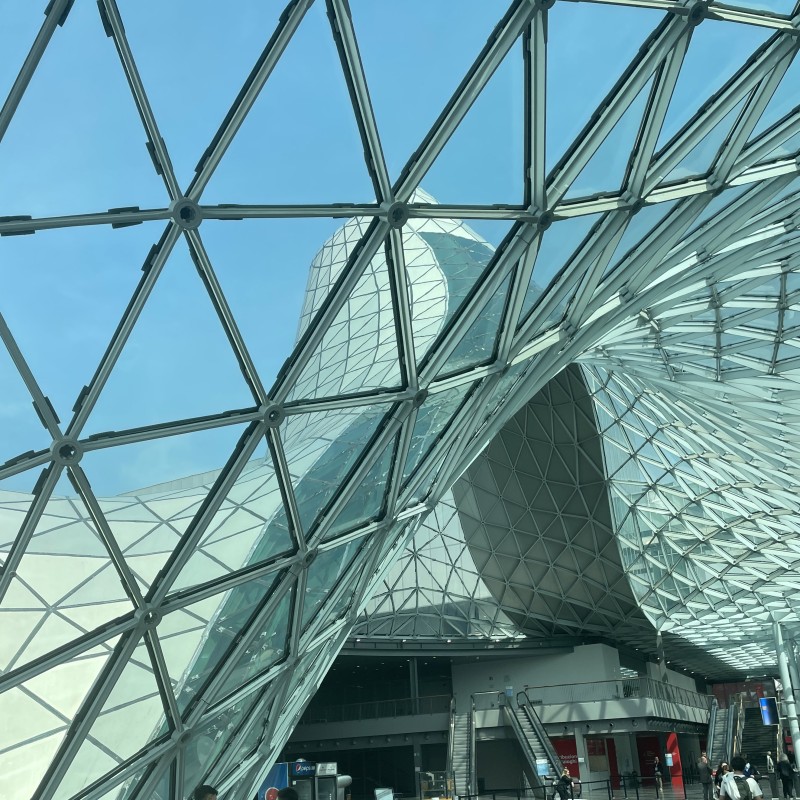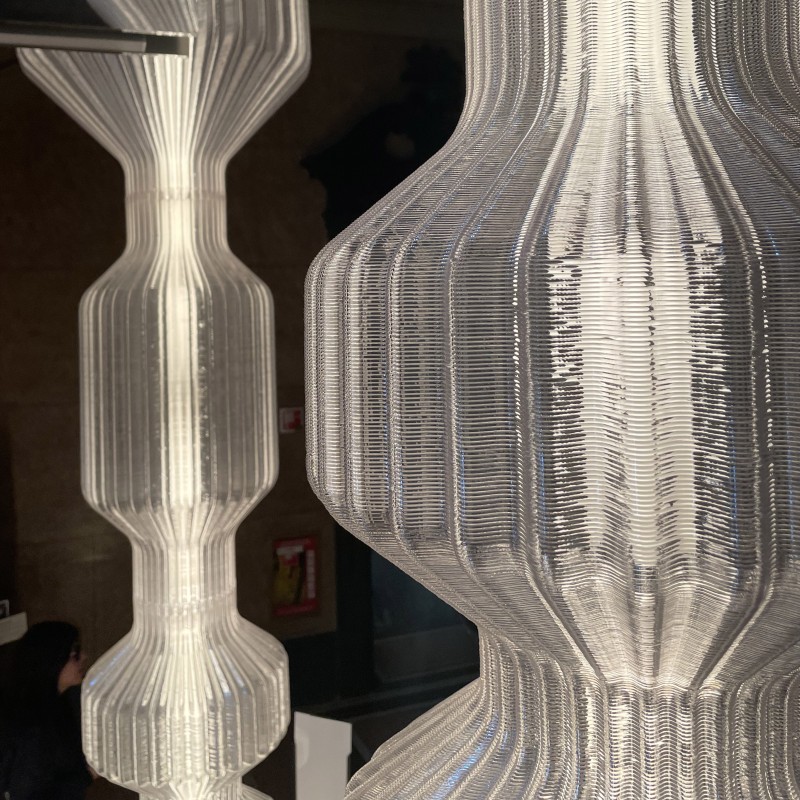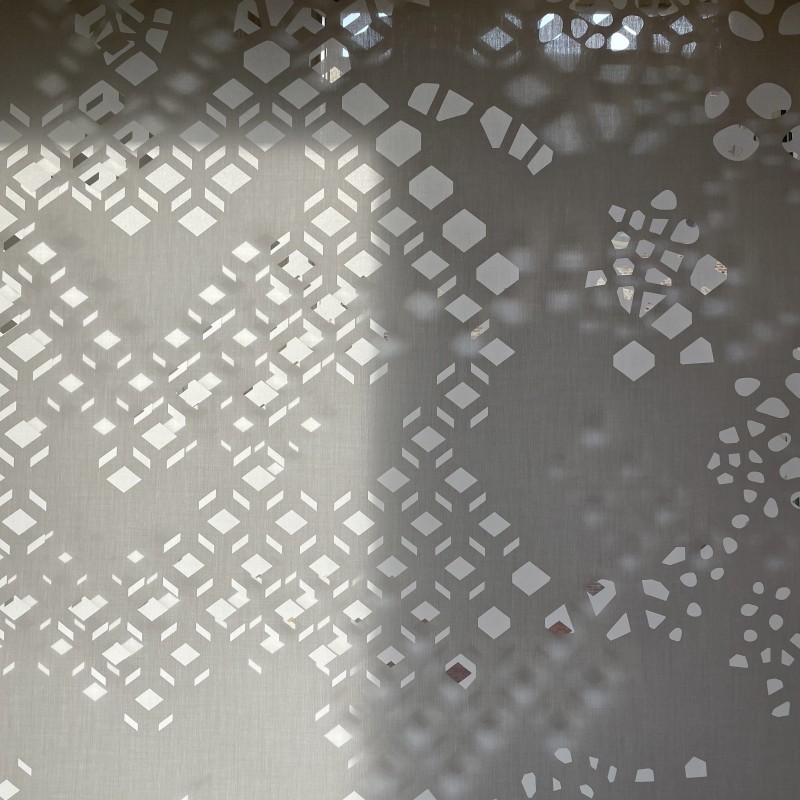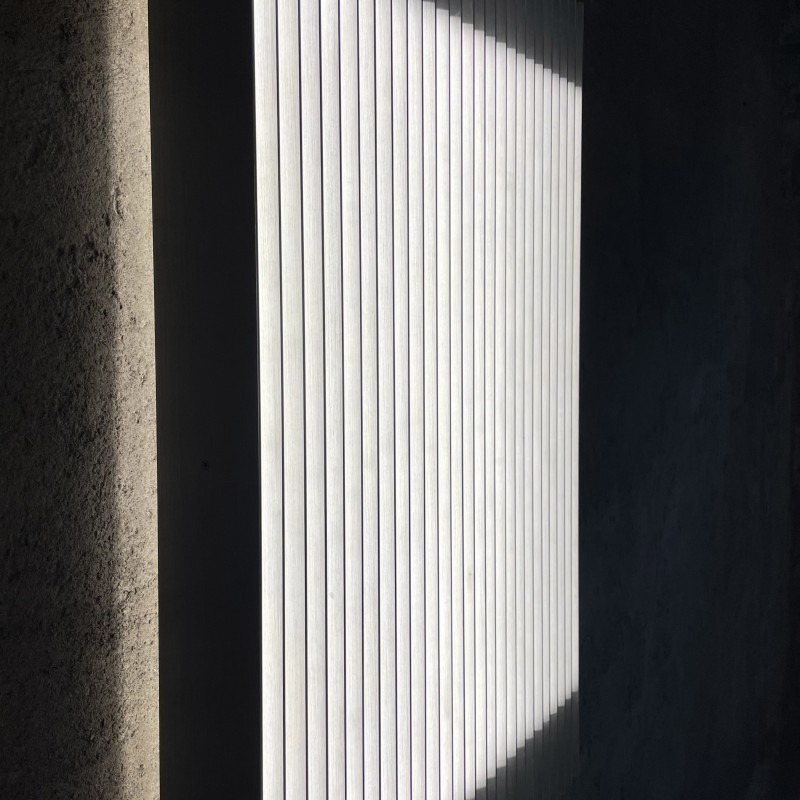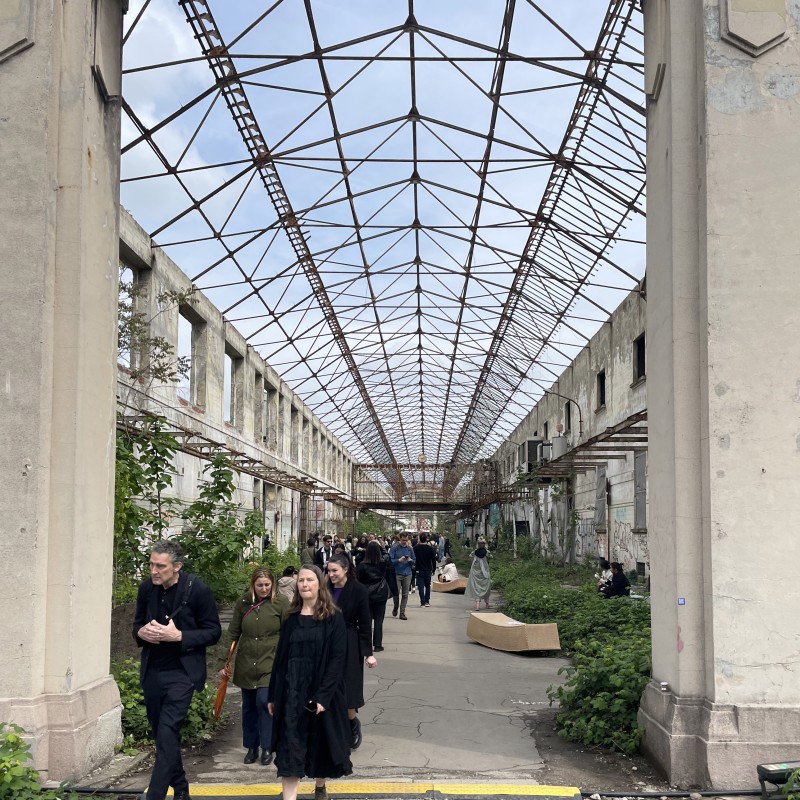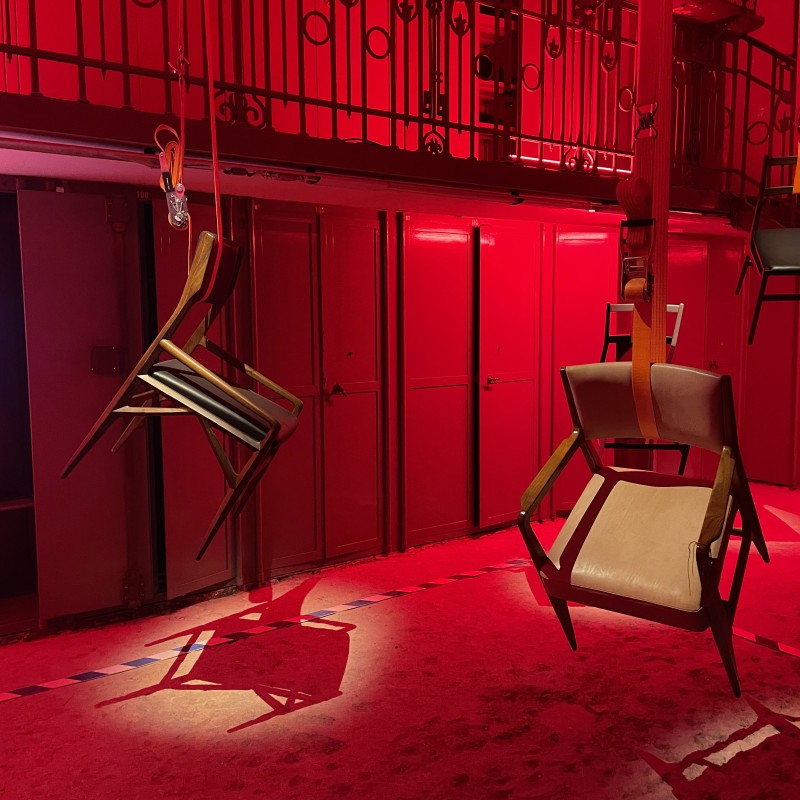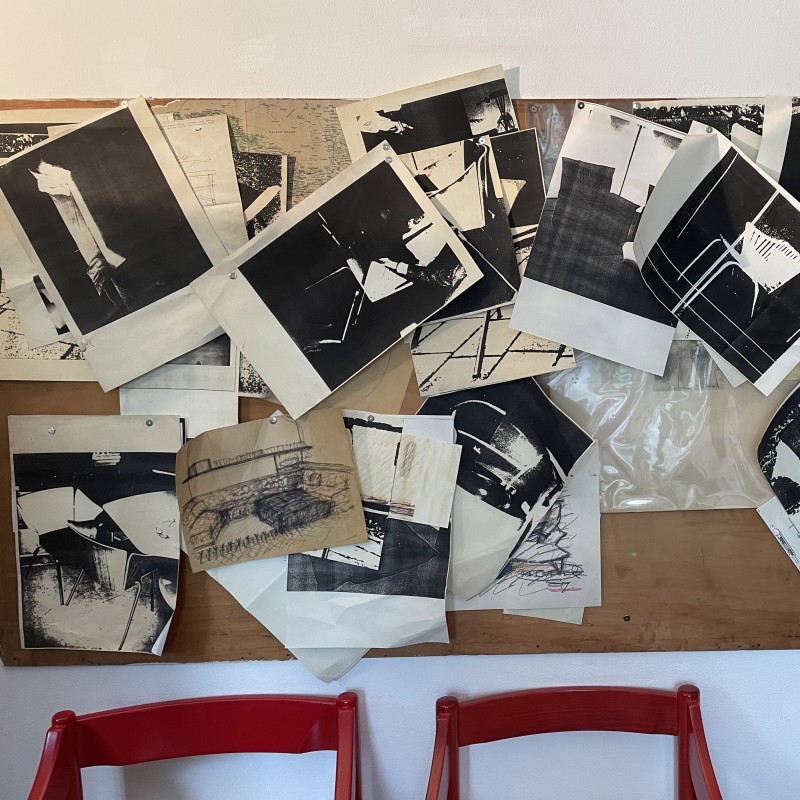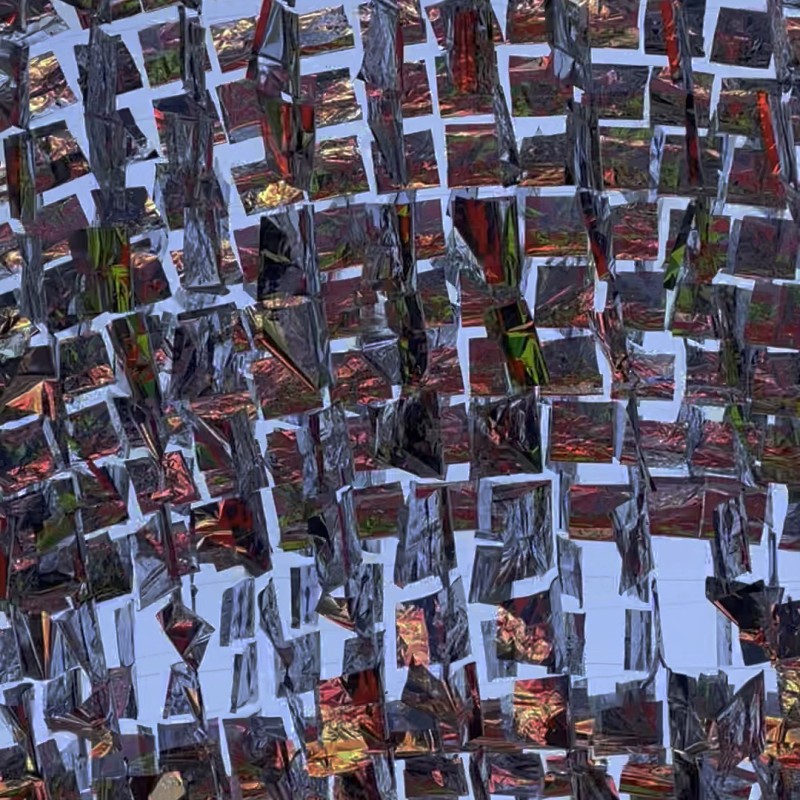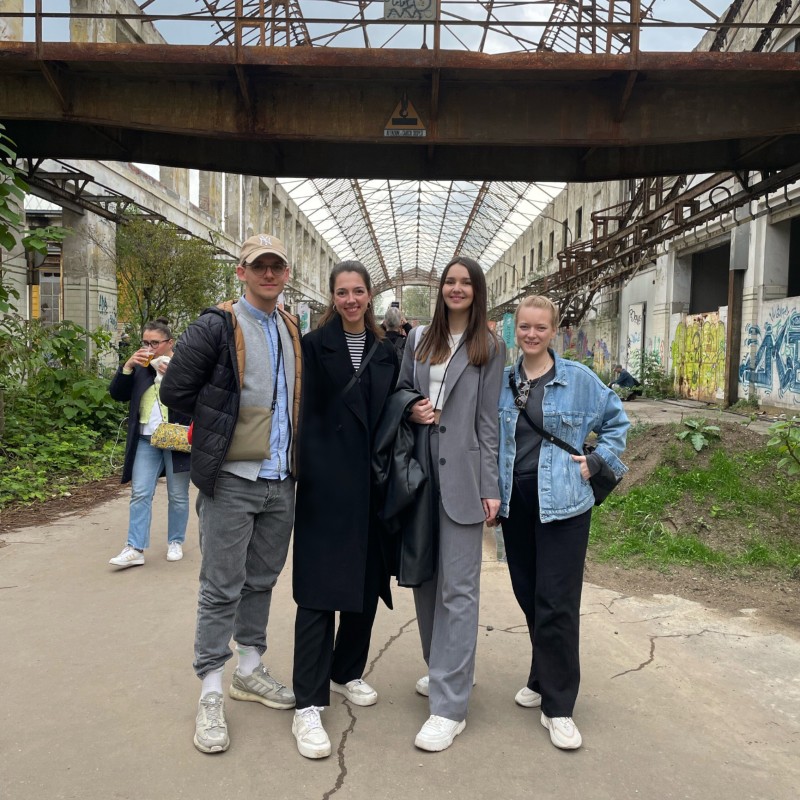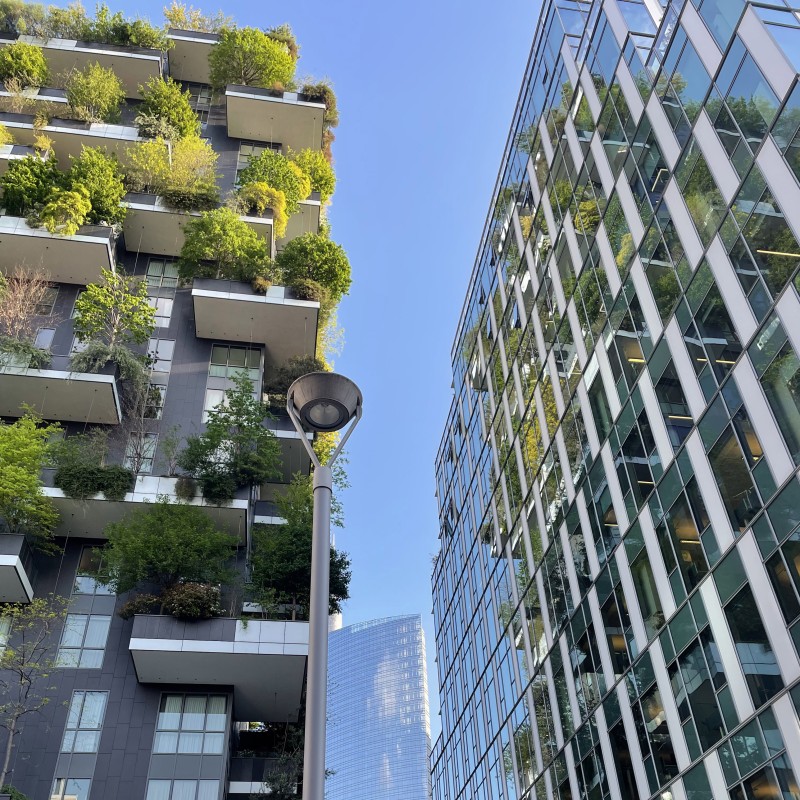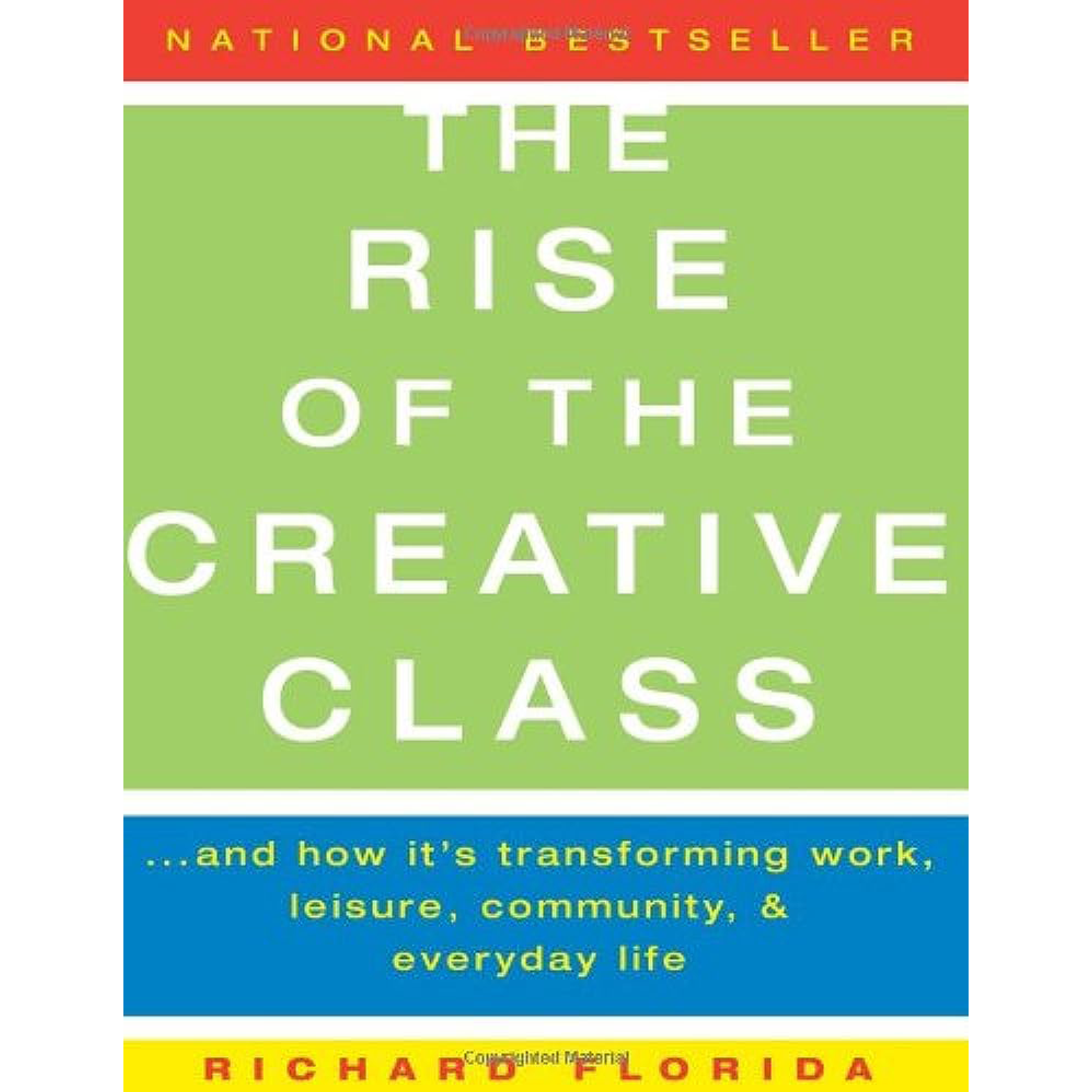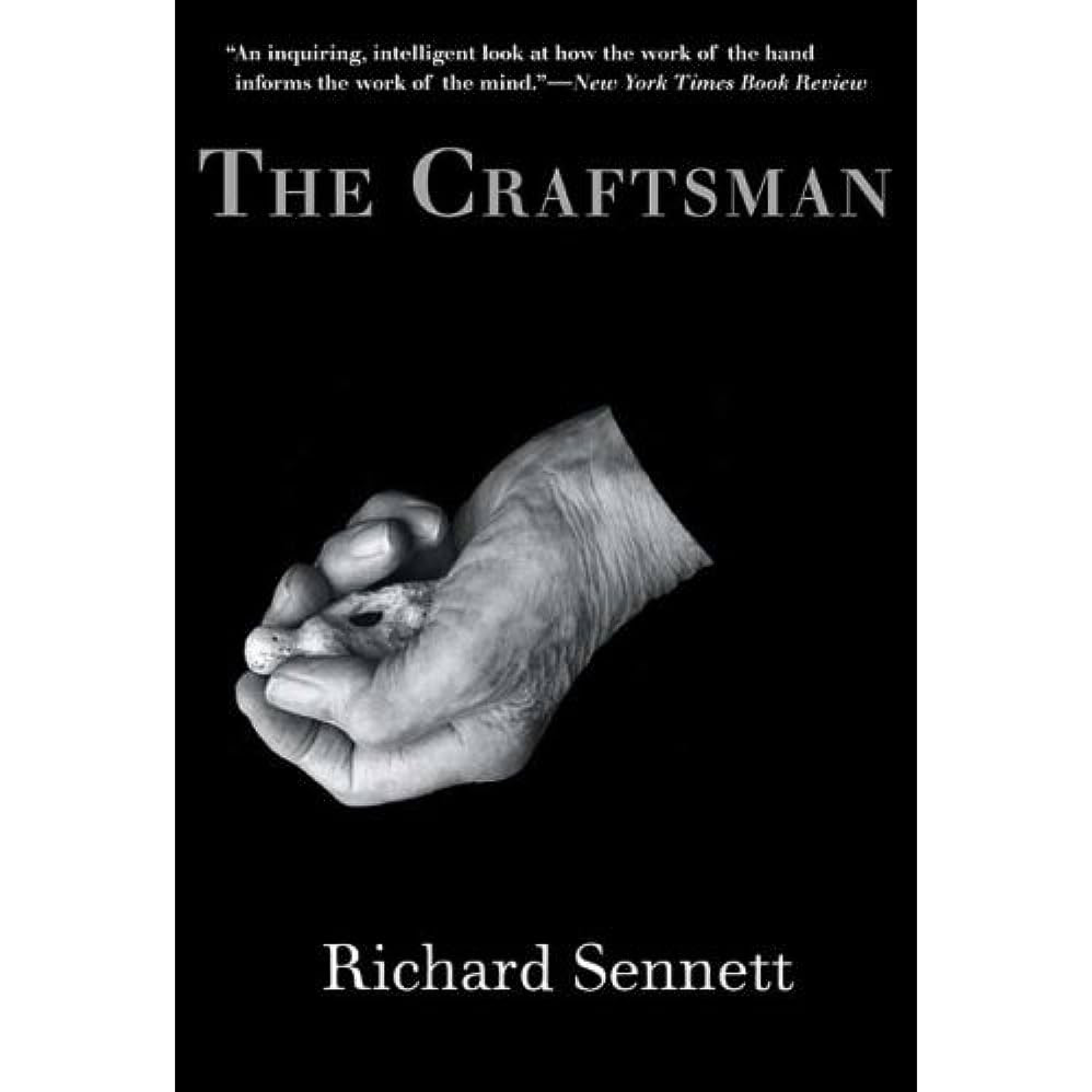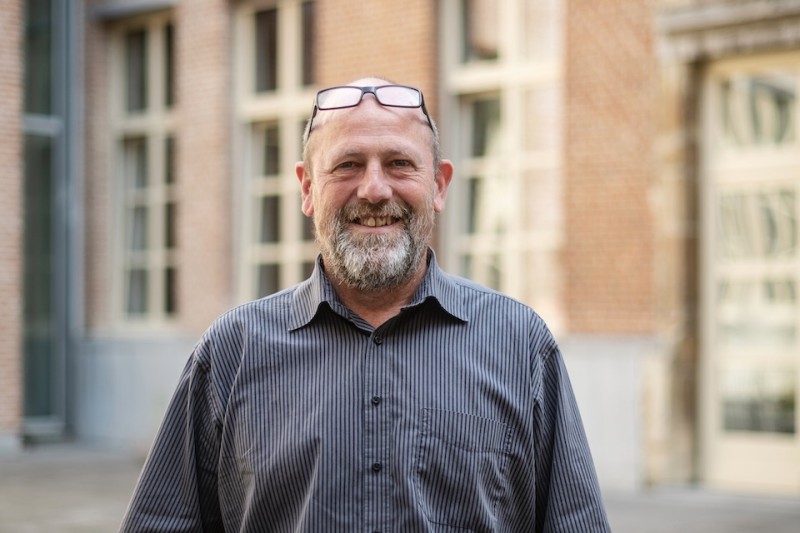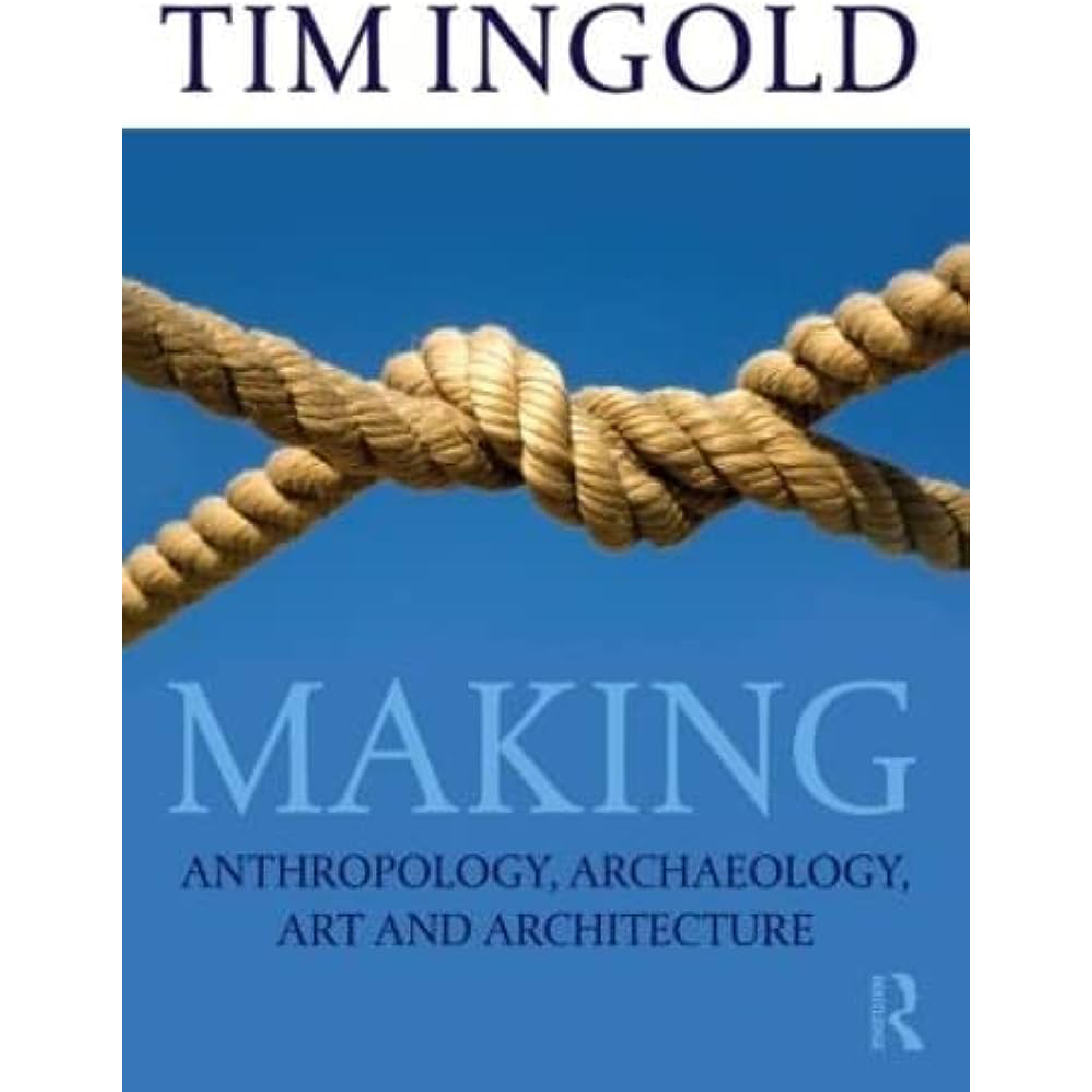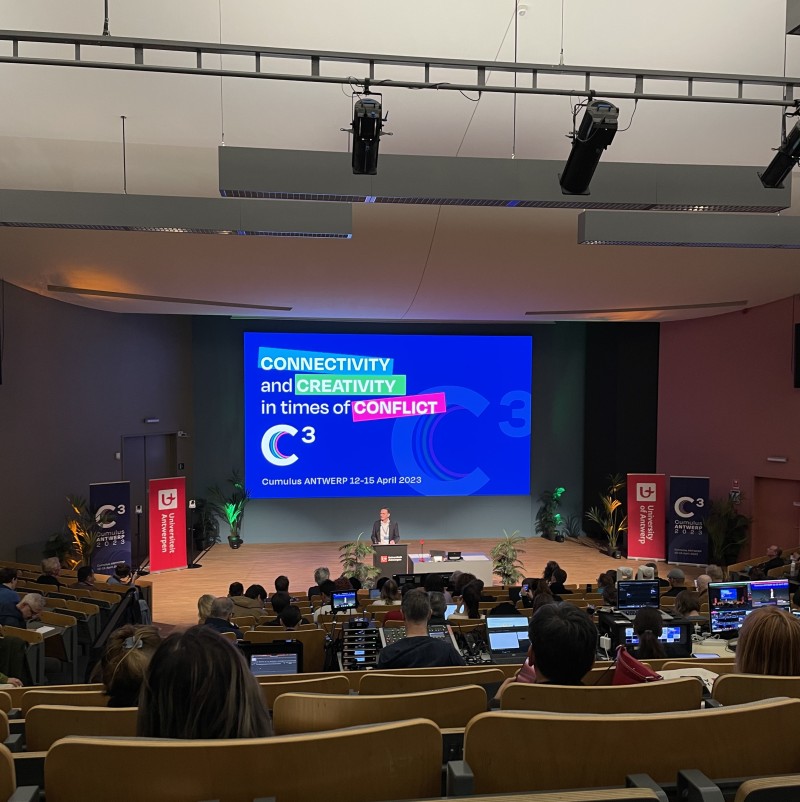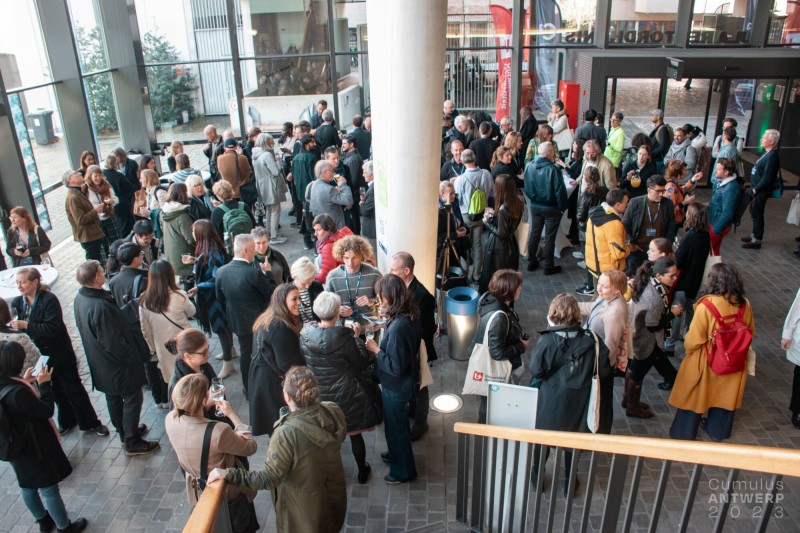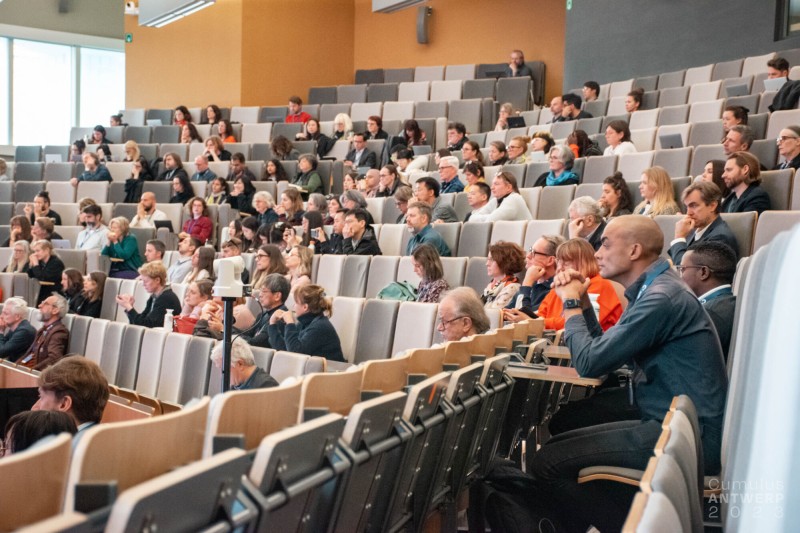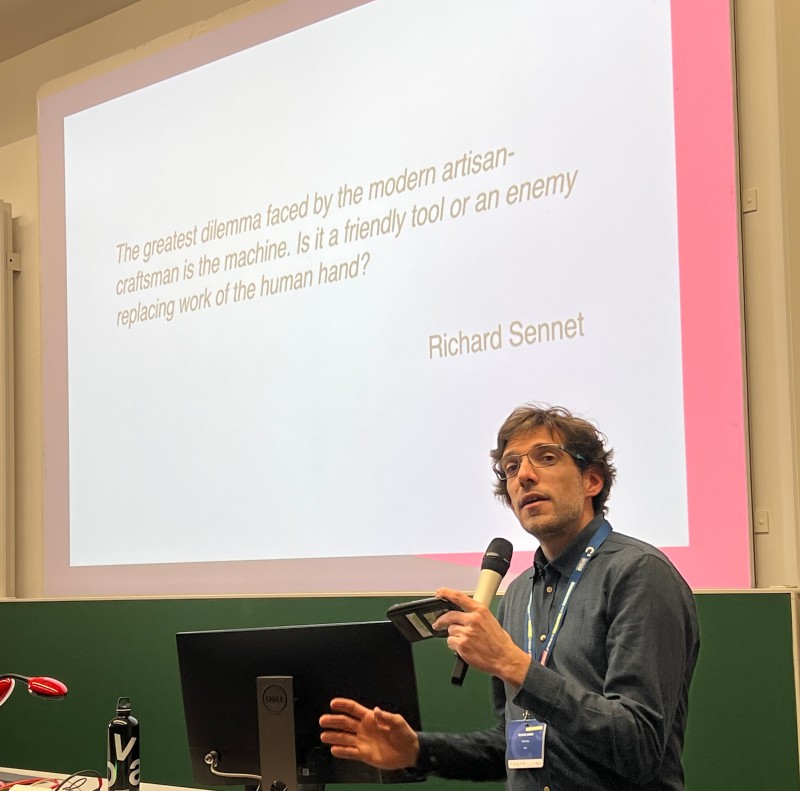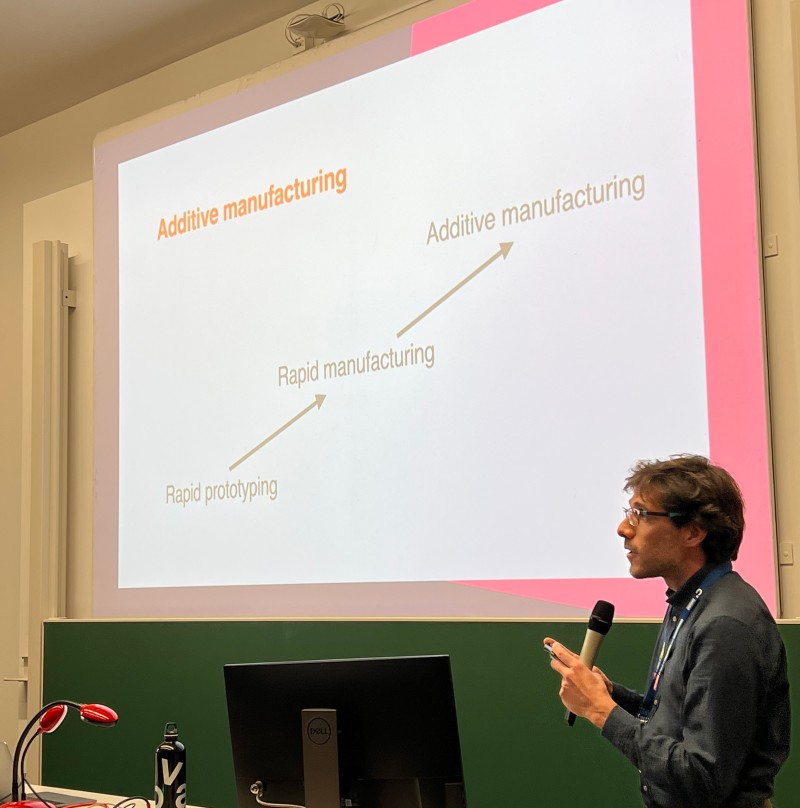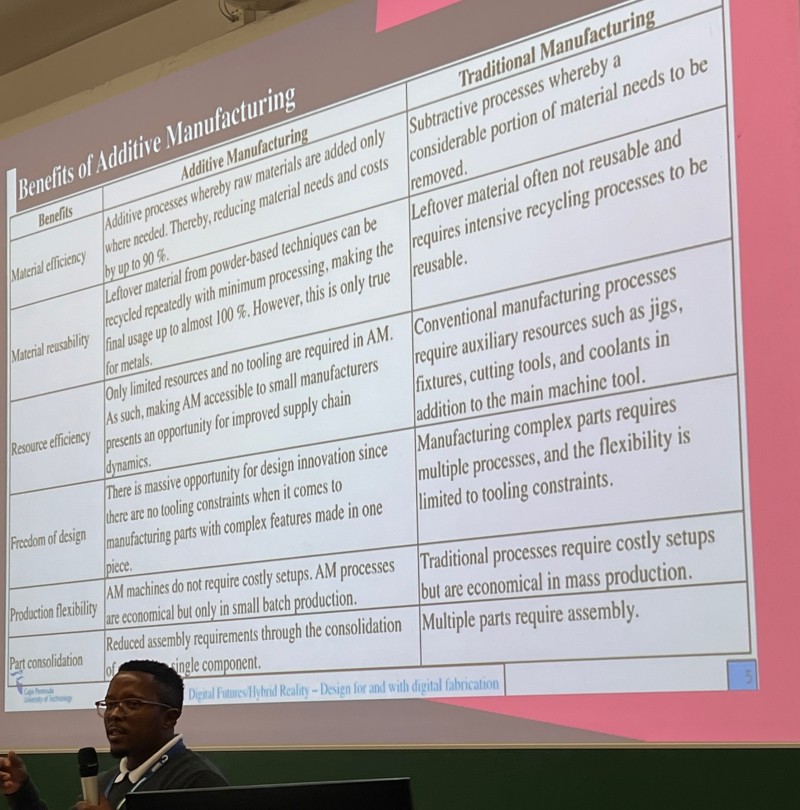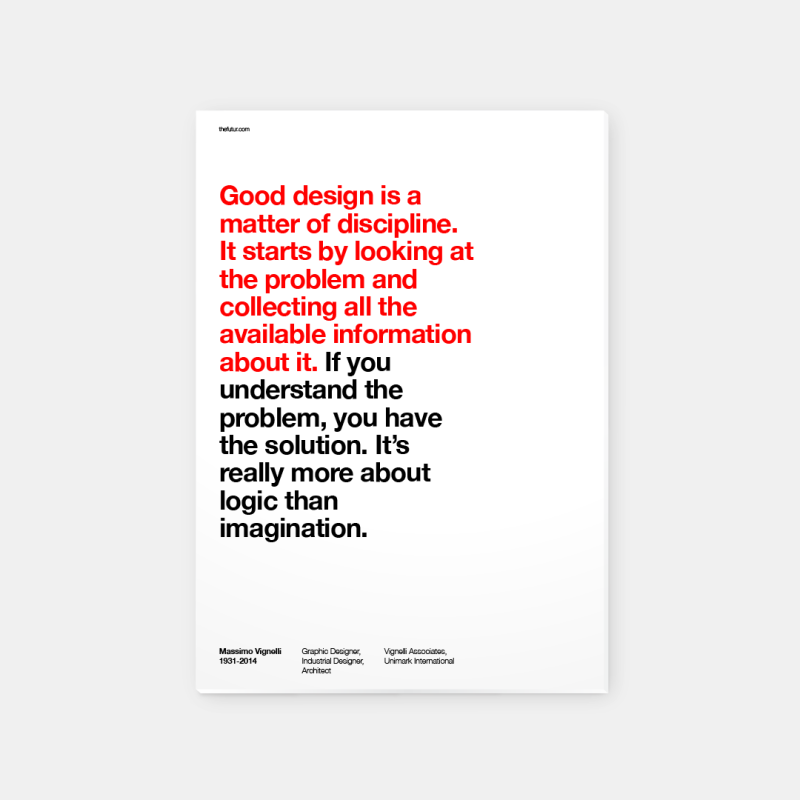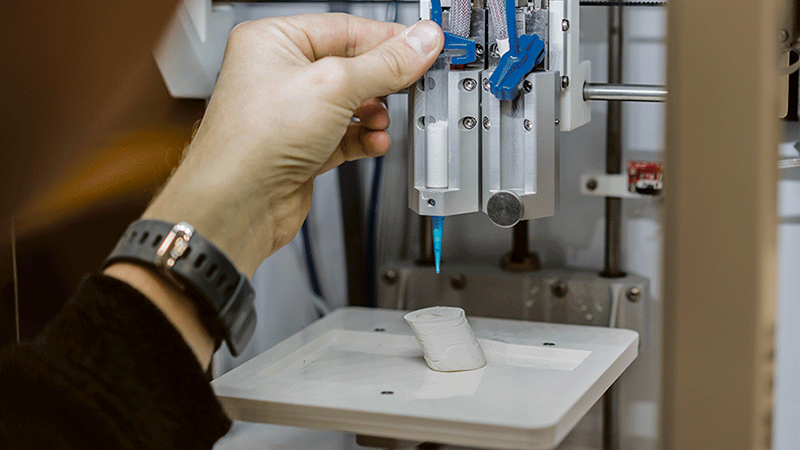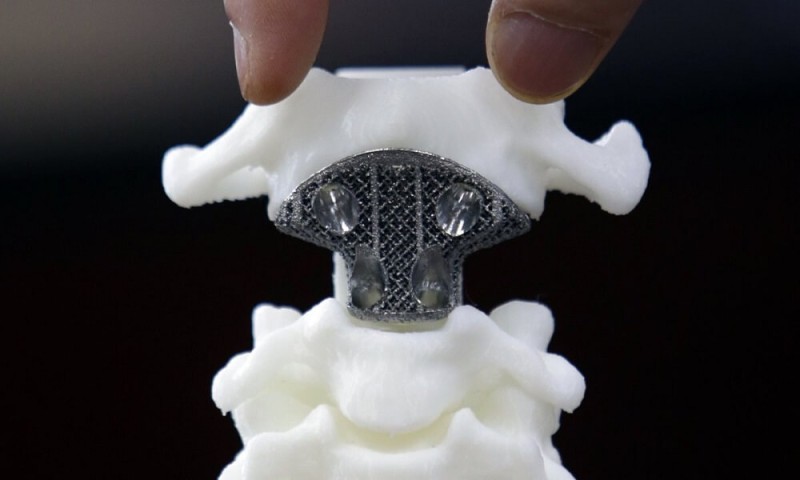Log Book
ERCO FACTORY VISIT
»Light is the fourth dimension of architecture.«
Urban spaces are often jumbled, there are countless lights for different purposes that need to be organized. That's why we explored all types of lighting tools at ERCO: spotlights and their tracks, luminaires, lenses, …
»Light is the fourth dimension of architecture.«
Urban spaces are often jumbled, there are countless lights for different purposes that need to be organized. That's why we explored all types of lighting tools at ERCO: spotlights and their tracks, luminaires, lenses, shades, illuminants, LED technology. Based on simple geometric shapes, all product ranges are easy to combine with each other and in different sizes. The wide range of tools gives the designer the flexibility to realize projects of any scale and complexity. All parts can be easily modified and assembled in various situations.
At the light factory in Lüdenscheid, ERCO develops, designs and manufactures luminaires with a focus on photometric optics, electronics and sustainable design. The lighting tools are developed in close collaboration with architects, lighting designers and electrical designers. They are used primarily in the following applications: Work and Culture, Community and Public/Outdoor, Contemplation, Living, Shop and Hospitality. © ERCO GmbH
COFFEE + DIALOGUE with Christian Schreckenberger about OPENNESS
OPENNESS is one of the values we explore in our FUTURE DESIGN EMBASSY in regard to its relevance for young designers when they are facing the challenges of the 21st century, especially when working in an intercultural context.
There …
OPENNESS is one of the values we explore in our FUTURE DESIGN EMBASSY in regard to its relevance for young designers when they are facing the challenges of the 21st century, especially when working in an intercultural context.
There are various contemporary ways we use the word OPENNESS when we talk about design:
- One of them is the open interpretation of the designed object by its user. The user is able to find his or her own applications when interacting with the object or product.
- The most common one is in the digital world where OPENNESS means the open access to information and knowledge. Design concepts, ideas or digital tools are accessible to everyone for free.
- The third way we use the word OPENNESS in the design context is the application of an open-ended process in which we don't know exactly where we're heading with our first impulses or ideas when we make explorations, being very open towards what we may find.
- Here at the Future Design Embassy OPENNESS is the attitude with which we try to face the world. We try to be open to otherness, to cultural differences and to everything we encounter when we leave our own safe spaces.
We invited Christian Schreckenberger to this COFFEE + DIALOGUE to introduce us to his interpretation of OPENNESS in his work as an artist and sculptor.
Christian Schreckenberger has brought some visuals of his own and of his student's work into the Embassy.
He starts his presentation with two pages full of small scribbles – drawings which communicate a search for form. The hand which draws the lines wants to explore, it’s a dialogue between head and hand. These scribbles document the process of drawing like discoveries you make when strolling along without any cause. The mind guiding the drawing hand is open to what it may find there. This is how Christian Schreckenberger goes about searching for the initial impulse for his work:
»What I mostly do, is with a kind of brainstorming under conditions of being half asleep and half awake. In a way I’m addicted to do that. It’s the first thing I do. Every time when I return to the studio, I pick up a piece of paper or better, not only one piece, mostly many pieces of paper and I start sketching and drawing. And then, at a certain point of time, some shapes and three-dimensional objects appear. And then I go on doing declinations, conjugations and variations of that object. After that I continue by treating the next image in the same way. And so on, and so on… they're all in a way similar but then they appear different on the page. This is what I do most of the time.«
Christian Schreckenberger then goes on to quote from the text that art historian Dr. Emanuel Mir has written about his work in 2014:
»Christian Schreckenberger's parallel universe is now filled with hundreds, if not thousands of objects. Few of these objects have manifested themselves in the three-dimensional world and the vast majority exists only as drawings. They either lay resting, awaiting their impending birth, or become eternally fossilised on paper like a failed species in a demanding environment. The designs which have been realised have taken all conceivable forms. They consist of a diverse range of materials and conjugate all textures, structures, materials and colours. They are ornaments, implements, fragments of quotations, gestures which have taken form or material experiments. Upon first glace it is only their heterogeneous, open character which connects them. (…) Every three-dimensional structure builds on a multitude of sketches, which consist of prototypes and variations of objects.«
Schreckenberger elaborates this process showing examples of several pieces.
- RUBBER DRAWING, 2021
- NO MORE EXCUSES No. 3, 2018
- ICON, 2012
- LOCAL GROUP, 2017
- CELIBRITY, 2021
- BIRD, 2022
RUBBER DRAWING and NO MORE EXCUSES are obviously extensions of the drawings into materiality. Both of them are featuring a line 'dancing' on a material surface. NO MORE EXCUSES is made from a found object, a piece of white chip board which used to be a part of a cabinet. The line 'dancing' on the surface was created by sawing the board into pieces and repeatedly assembling them at different angles. It's edges are chipped in the same way as the drilled holes which are left from the cabinets structure. The work is an expression of the open process of exploring and finding.
ICON and LOCAL GROUP are both depictions of spiral structures – explorations of the spiral in space. Whereas ICON is a velvet carpet with a very three-dimensional appearance, LOCAL GROUP is a large sculpture made from Styrofoam. The choice of material for LOCAL GROUP may be a practical, less costly solution but it also surprises as a contrast to the spirituality of the Palermo monastery in which it is situated. At the same time the spiral elements seem to be a quotation of the courtyard’s columns. The piece is an open interaction with the space it was made for.
CELIBRITY, also a piece made from Styrofoam, shows its sculptural complexity by spiraling the extrusion of a star. You can literally feel the open search for just the 'right' form in it's dynamic. Our embassy team, collaborating with an American design faculty, also discovers assets of superhero comics and an ironic glorification of stars and stripes.
The title BIRD lends an ironic note to the large sculpture of light blue painted panels, reminiscent more of a crashed airplane than a free-flying animal. In a way it tells an Icarus story. However, this may be only one interpretation of this work, which through its abstract form opens the imagination of the viewer to many stories.
With images of his student's work Christian Schreckenberger elaborates how he tries to open his student's mind towards finding their own topics and towards open-ended approaches. He encourages them to deconstruct objects and their functions in order to find new functions or aims for their own practice. In the same way he helps them to deconstruct concepts and opinions. He means deconstruction in the very best sense of trying to free oneself of stereotypes, of stereotypical behavior and simple stereotypical ideas of how things ought or seem to be. He describes himself as a 'birth helper' for this kind of approaches or ideas. He encourages students to try out various things, to try to understand them and to observe what could happen next.
In the end, Christian Schreckenberger sums up his working process like this:
»… and then things will develop. OPENNESS means not having a clear plan, perhaps you could call this a method of discovery. It's like going into the jungle and not following the straight path, but going to the left and to the right, to discover what is behind bushes and the trees – simply like this – this is what I mean by OPENNESS!«
After the presentation follows a Q and A session.
This is an exerpt of the most important dialogues:
Q: How do you know what to do next, or what is right, in this open 'method' of discovery?
A: I analyze the process, it has very much to do with being open for, failures, for mistakes, for experiments, for unexpected things and analyzing them as you are going along. Let me give you an example: If you want to be a chef, I mean a cook, a famous chef, what are you going to do? You won't start with reading recipes. This is not the first thing that you are going to do. You will start to boil an egg. I think this is useful. The very first thing that you do is to boil an egg. And the next thing you do is, look at what your mother does. And you should put your nose in every pot and smell – ah, this is chocolate, and how does it taste? And hard beans….etc. Wonderful. How can ingredients be combined? And then, when you finally have experience, this is the background you need to be able to understand recipes, not before that. As a teacher I try to avoid that students believe they can learn recipes and then just follow them, and then it'll be successful. If you've never boiled an egg, you won't be able to follow any recipes. And if you've never experienced the smell of beans, you won't understand anything about cooking, this is what I believe.
So, this example shows how simple things in life can be. I'm often wondering about very complex concepts, which students confront me with. Then I ask them “Did you ever smell beans? Or did you ever cook an egg?” So, back to your original question, what I’m also saying is that experience gives us the tools for making the right decisions in the process and letting us know what to do.
Q: In the very beginning you said that you do drawings which seem to be the origin for all of your work. You said you do them in a half sleep, half awake, state of mind. So, my question is, is the consciousness, kind of an enemy for OPENNESS?
A: No. No, absolutely not. I think OPENNESS has to do with using all the tools you have, it has to do with sometimes being half asleep or something times being very concentrated, sometimes being very playful, and sometimes following concepts and sometimes taking a distance to see things from far away. Design has nothing to do with only following one clear plan. But it's the same as with singing or cooking, I think, or maybe I don't know, building cars or gardening. You need all of your possibilities, your senses and your brain, everything. We do experiments, but we talk about what we are doing and we analyze it. I want to invite people to go to the playground, let's say, take sand forms and/or go into the kitchen, smell the beans and so on; but consciousness is just as necessary as daydreaming!
Q: I've been very regimented with my work thus far. I'm trying to be a little more open. You know, I usually go through very traditional design processes starting with sketch ideation and then kind of, just skip around a little bit and go back and forth from CAD and then back to sketch. I mean, generally I'm a little more traditionally regimented, but I'd like to find a freer approach.
I'm totally scared of this kind of process and I never took a course of yours. So, I try to figure out what helps you to decide which way you should go next after you made a drawing, and is there any big vision that you can say, okay, this kind of right, I can go now on to a physical model, etc.
A: You mean how to go on if nobody tells you the next step? I mean, in my course it's not that the people are really alone. If they have an idea, I will immediately show them examples. And you could try this, and you could try that. Imagine maybe it could work like this. This is very important. I expect that people arrive with an idea and some sketches and with some observations and some found footage or whatever. And if they offer that, then I'm like a catalyst. And then I have something which I can reinforce, but if there's nothing to reinforce, I can't reinforce it. So, this is the only point. There's no need to be frightened. OPENNESS doesn't mean you are alone all the time.
Milano: Personal Impressions
As part of the Future Design Embassies research project working group, we had the opportunity to attend the Milan Furniture Fair to gather inspiration for our future designs. It was my first experience at Milano Design Week and I was …
As part of the Future Design Embassies research project working group, we had the opportunity to attend the Milan Furniture Fair to gather inspiration for our future designs. It was my first experience at Milano Design Week and I was excited by the variety of exhibitions and events that took place during the fair.
Our main focus during this excursion was on luminaire designs, lighting concepts and lighting installations. We visited showrooms of well-known companies such as Artemide, Flos, Occhio and Ingo Maurer to see their latest designs and possibly learn more about their manufacturing and design process. In addition to the showrooms, we also visited various exhibition halls and galleries such as the Triennale and Alcova, where we were able to admire a wide variety of designs by renowned designers and up-and-coming talents from all over the world.
Throughout the trip, I had the impression that new, innovative technologies and materials were in harmony with traditional values and realities.
Despite these contrasts, they harmonised with each other in a wonderful way. It was possible, for example, to take the 1950 tram to futuristic installations by car manufacturers or to follow the metro's guidance system to get to an exhibition on bioplastics.
I was inspired by the collaboration of a wide range of nations and their exchange about new production methods, materials, languages of form and aesthetics. It was remarkable how different approaches to common issues were presented from different perspectives. The fair provided us with an excellent opportunity to exchange ideas with each other, to enter into dialogue with other designers and to discuss important issues.
In the end, we were all - visitors, organisers and exhibitors - united by the same language: design.
Milan Design Week, Day 4
On our last day we visited the Salone Satellite, the area next to the big furniture fair where manufacturers and designers can connect and network. We were able to meet old acquaintances and make new contacts there.
Our trip ended …
On our last day we visited the Salone Satellite, the area next to the big furniture fair where manufacturers and designers can connect and network. We were able to meet old acquaintances and make new contacts there.
Our trip ended with an Aperol Spritz by the canal in Navigli, where we shared and reflected on our impressions and experiences.
Overall, the journey to Milan was really great and showed us again temporal jumps between past, present and future design.
Milan Design Week, Day 3
On day three, we visited Alcova, the former slaughterhouse Porta Vittoria, which today is a platform for already renowned, but also young designers. In the afternoon we went to the DimoreCentrale, the former railroad warehouses that now serve as a …
On day three, we visited Alcova, the former slaughterhouse Porta Vittoria, which today is a platform for already renowned, but also young designers. In the afternoon we went to the DimoreCentrale, the former railroad warehouses that now serve as a space for exhibitions of art and design.
Milan Design Week, Day 2
Our first stop, on the second day, was the Kia exhibition »Opposites United«, which showcased Kia's design philosophies and principles. This impressive exhibition with visual and acoustic installations invited us to pause, perceive and marvel.
After this digital and …
Our first stop, on the second day, was the Kia exhibition »Opposites United«, which showcased Kia's design philosophies and principles. This impressive exhibition with visual and acoustic installations invited us to pause, perceive and marvel.
After this digital and futuristic type of exhibition, we continued in contrast with the old Milan tram to the Lund University exhibition. There were shown in a very different way how technology can be incorporated into design. Then we went to Fondazione Vico Magistretti, which offered insights into Magistretti's work and also serves as a historical archive. Again, we went back from digitalization and technologization to historical and old-fashioned design.
On our way to the Cassina exhibition, we visited many showrooms focused on lighting to get inspiration for future projects. Cassina displayed many design classics by renowned designers.
To end the day, we visited the Triennale, where the permanent exhibition featured many design objects that are already very old and still relevant today. We also visited the exhibition of the designer and architect Ettore Sottsass »La Parola«. There was shown his design for a room, where the starting point was, little space and little budget.
It was exciting to see how much relevance this approach still has today, or how much this approach has gained in relevance.
Milan Design Week, Day 1
The Embassy goes to Milan!
This year we made our way to Milan Design Week and experienced four days full of inspiration, creativity and design.
The city had so much to offer that you could stay there for several weeks and …
The Embassy goes to Milan!
This year we made our way to Milan Design Week and experienced four days full of inspiration, creativity and design.
The city had so much to offer that you could stay there for several weeks and still not see everything. Here is a summary of what we saw and experienced during our four days in Milan.
After arriving in Milan, we visited the Brera design district and Ingo Maurer's exhibition, which focused on light, lighting and installations. We walked around Brera and explored many things in small exhibitions spread all over the city, mostly focusing on light, lighting design and the design of luminaires.
We then met up with the rest of the embassy-team in Isola, a district of futuristic architecture and urban planning where skyscrapers are lushly planted. There we were asking ourselves if all of our future cities will look like this.
Cumulus Conference Antwerp - The reinventions of craft: A historical view on the usefulness of craftsmanship
The keynote speaker Bert De Munck explored the question of how to integrate traditional craft knowledge in modern economic and educational settings. He began by stating the problem of modern dichotomies, such as knowledge vs. technology, theory vs. practice, design …
The keynote speaker Bert De Munck explored the question of how to integrate traditional craft knowledge in modern economic and educational settings. He began by stating the problem of modern dichotomies, such as knowledge vs. technology, theory vs. practice, design vs. making, arts vs. craft, abstract vs. embodied knowledge, and mind vs. hand.
He conceptualizes the problem by asking whether craft is at odds with the knowledge economy.
»[The workers’] property – which stems from their creative capacity – is an intangible because it is literally in their heads.«
(Richard L. Florida, The Rise of the Creative Class and Everyday Life, Basic Books 2002, p.68.)
Of particular interest for our own research question »Backtracking Modern Times. Are the ideas of Modernism sufficient to solve 21st Century problems?« here at the embassy was the discussion of whether craft is at odds with modernity:
»Craft was not a static backdrop against which industry emerged (…), the two were created alongside one another, each defined, against the other through constant juxtaposition.«
(Glenn Adamson, The Invention of Craft, London 2012, p. xiii.)
»In guilt and craft labour, [labour] appears as still immersed in its particular specificity (…) but [as a result of capitalism] labour loses all the characteristics of art [and] it becomes more and more a purely abstract activity, a purely mechanical activity (…), activity pure and simple.«
(Karl Marx, Outlines of the Critique of Political Economy)
»The arts (…) are part of a great system invented for the expression of a man’s delight in beauty (…) they are the sweeteners of human labour, both to the handicraftsman, whose life is spent in working in them, and to people in general who are influenced by the sight of them.«
(William Morris, Hopes and Fears for art, Boston 1882, p. 9.)
Also the context of whether the craft is a victim of eurocentrism is crucial for our own project.
»To create any thing, Aristotle reasoned, you have to bring together form (morphe) and matter (hyle). In the subsequent history of Western thought, this hylomorphic model of creation became ever more deeply embedded. (…) Form came to be seen as imposed by an agent with a particulat design in mind, while matter, thus renderes passive and inert, became that which was imposed upon.«
(Tim Ingold, The Textility of Making, in: Cambridge Journal of Economics, Vol. 34, 2010, p. 91-102, p92 and 97.)
He argues that the Western concept of creation is based on the idea of imposing form on matter. Furthermore, that this view of creation has led to a devaluation of craft, as it has been seen as a purely mechanical activity.
Ben De Munck then traced the history of the concept of craft, from the 18th century view of artisans as useful 'automatons' to the Renaissance view of artists as inventors or creators. Adam Smith, the founder of modern economic thought, distinguishes between arts and crafts, between people with the ability to invent (ingenuity is necessary) and the ability to subsequently manufacture these things:
»The arts, which are much superior to common trades, such as those of making clocks and watches, contain no such mystery as to require a long course of instruction. The first invention of such beautiful machines, indeed, and even that of some of the instruments employed in making them, must, no doubt, have been the work of deep thought and long time, and may justly be considered as among the happiest efforts of human ingenuity. But when both have been fairly invented and are well understood, to explain to any young man, in the compleatest manner, how to apply the instruments and how to construct the machines, cannot well require more than the lessons of a few weeks: perhaps those of a few days might be sufficient.«
(Adam Smith, An Inquiry into the nature and Causes of the Wealth of Nations, Book 1, London 1778, 2d ed., pp. 151-153.)
The speaker concluded by suggesting that craft knowledge is a heritage from which we can still learn today. He cited Richard Sennett's argument that craft is an »enduring, basic human impulse, the desire to do a job well for its own sake.« He reasoned that craft can help to remedy the alienation of workers and consumers in the modern world.
Ben De Munck's discussion of the dichotomies that have shaped our understanding of craft is thought-provoking. It suggests that we need to rethink our assumptions about what it means to be a craftsman or craftswoman, a designer today.
The speaker's historical analysis of the concept of craft is also illuminating. It shows how our understanding of craft has changed over time, and how these changes have been shaped by economic, political, and cultural factors.
The speaker's argument that craft knowledge is a heritage from which we can still learn today is timely.In a world increasingly dominated by technology, it is important to remember the value of traditional skills and knowledge, as well as to reflect on them in an international context.
Bert De Munck is full Professor in History at the University of Antwerp, teaching 'Early Modern History', 'Theory of Historical Knowledge' and 'History of Science and Society'. His research is situated at the intersection of urban history, social history and the history of knowledge, and concentrates on craftsmanship, artisanal epistemologies and the assessment of knowledge and skills. He coordinates the Horizon Europe-project Tracks4Crafts: Transforming Crafts Knowledge for a Sustainable, Inclusive and Economically Viable Heritage in Europe.
Cumulus Conference Antwerp – Visiting Cumulus as a student ambassador
After we already had the pleasure to participate as student ambassadors at the Cumulus Conference in Detroit, USA, we also had the opportunity to attend the Cumulus Conference in Antwerp, Belgium. This time the conference was held under the title …
After we already had the pleasure to participate as student ambassadors at the Cumulus Conference in Detroit, USA, we also had the opportunity to attend the Cumulus Conference in Antwerp, Belgium. This time the conference was held under the title "Connectivity and Creativity in times of Conflict".
As our society is constantly searching for solutions to challenges and conflicts on a local and global level, maintaining dialogues and changing perspectives are particularly important in order to collectively tackle these issues and accomplish common goals.
Attending the conference as student ambassadors enabled us to connect and discuss current matters and challenges first-hand with the design community, artists, experts and educators from all over the world. The fact that so many people from various nations and educational backgrounds came together for a few days and allowing us to connect with them was special, since everyone brings further knowledge and skills to the table. Experienced design professionals approach certain matters from a different perspective compared to us students and aspiring designers. Thus, each of us adds a different prospective which can be quite significant in the design process. Especially because design plays such a crucial part in shaping every aspect of our lives. In fact, designers are responsible for shaping entire societies, behaviors, products, industries and buildings. Furthermore, through these various national and international interactions with design experts, we have been able to talk about and raise awareness on certain topics that are important to us and that we are concerned about.
Working, interacting and listening to very interdisciplinary lectures of Cumulus participants gave us additional insight into the existing diverse societies and made us appreciate cultural differences even more. The beauty of such international, interdisciplinary exchange is that we can learn and grow from it. We acquired new knowledge, broadened our horizons, and developed a more holistic view to better manage current and foreseeable conflicts and promote a brighter future.
Given the opportunity to engage among the Cumulus community has allowed us to expand not only the “Future Design Embassy” network, but also our skills in leadership, communication, and interpersonal. We learned that communication, openness to one another, and the exchange of ideas and thoughts are of great importance and can lead to unforeseeable experiences and connections. Through special educational experiences like these, which we share as log book entries or posts on social media, we try to inspire fellow students to take a proactive role in their studies and contribute and promote their own ideas even more.
Cumulus Conference Antwerp - Rapid Prototyping - Finding Appropriate Solutions
During the 3rd day of the Cumulus Conference in Antwerp, several keynote speakers share their thoughts on how it is crucial to evaluate the manufacturing processes that will be used to create a product. One of the keynotes, focuses on …
During the 3rd day of the Cumulus Conference in Antwerp, several keynote speakers share their thoughts on how it is crucial to evaluate the manufacturing processes that will be used to create a product. One of the keynotes, focuses on an important manufacturing process that has become increasingly popular in recent years: 3D printing, which offers unique possibilities and limitations that must be considered when designing products. It includes considering the properties of the materials and the structure of the product to ensure that it is suitable for the intended use.
When evaluating 3D printing as a manufacturing process, it is essential to consider the physical properties of the materials used in the process, such as strength, durability, and flexibility. The structure of the product also plays an important role, as 3D printing can create complex geometries that are not possible with traditional manufacturing methods. However, there are also limitations to consider, such as the size and resolution of the printing bed, the types of materials that can be used, and the time and cost required to print the final product.
By evaluating the properties and limitations of 3D printing and other manufacturing processes, designers can make informed decisions about which process to use for a particular product. This ensures that the final product is appropriate for its intended use and meets the necessary quality and safety standards. As an example of how evaluating manufacturing processes is essential in the design process, he talks about how this can be seen in the production of bone prosthetics using 3D printing. Initially, 3D printed bone prosthetics were designed to resemble those made from titanium, with a smooth surface that was thought to be more aesthetically pleasing and easier to clean. However, it was later discovered that the rifled structure created during the 3D printing process, which was initially seen as a disadvantage, could actually be an advantage in promoting the attachment of muscular cells. Muscular cells are known to attach more easily to rough surfaces than smooth ones. The rifled structure created during 3D printing provides an ideal surface for cells to attach to and grow, which can help promote the integration of the bone prosthetic with the surrounding tissue.
This is an important consideration when designing bone prosthetics, as a lack of integration with the surrounding tissue can lead to discomfort and a reduced range of motion. By evaluating the properties and limitations of 3D printing, designers were able to discover an advantage in the rifled structure that was initially seen as a disadvantage. This example highlights the importance of paying attention to small details and being open to unexpected benefits that may arise from using a particular manufacturing process.
The given example demonstrates the importance of evaluating manufacturing processes in the design process and highlights how small details that may initially seem like a disadvantage can actually be turned into an advantage with the right approach.
This principle of evaluating manufacturing processes in the design process can be compared to the thoughts of the modernist Designers Lella and Massimo Vignelli on appropriateness in design.
“Appropriateness transcends any issue of style.”
In their Vignelli Canon, the Vignellis argue that appropriateness is a fundamental principle of good design, emphasizing that a design must be appropriate for its intended use and context. Similarly, when evaluating manufacturing processes, designers must consider the appropriateness of the process for the intended use and context of the final product. It also shows how the modernist approach to a design process is still relevant today, as even with rapidly evolving technological progress, it will always be important to first properly study material characteristics or processes, in order to find a suitable and appropriate solution for a specific question or problem. This serves as a reminder that good design must always take the practical aspects of a design process into consideration.
